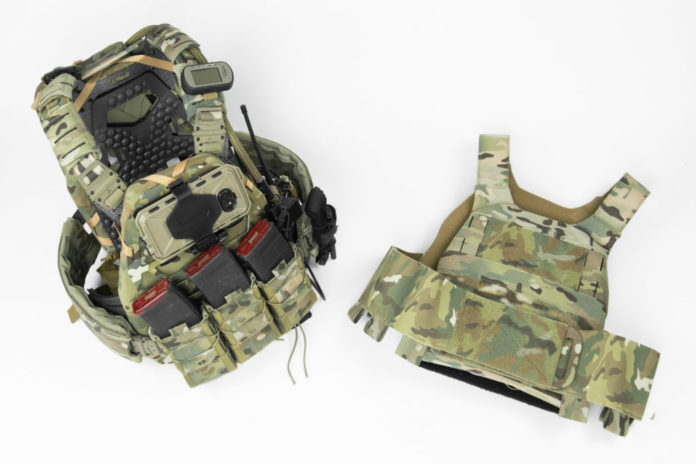In This Article
The concept of Every Day Carry is to allow perpetual access to tools to increase resilience in times of need. Simply put, it’s valuable to have gear readily accessible in a messenger bag to deal with most situations I may come across in the course of my day. Aside from simply meeting my own immediate needs, it also allows me to help others.
Depending on the environment, context, and level of preparedness you’re trying to achieve, you can tailor your EDC loadouts accordingly. For my purposes, I prefer a messenger bag while moving around an urban environment on foot, in a car, or on public transit.
Realistically, you can’t be ready for everything all the time, especially when it’s all carried in a smaller bag. So, I balance a mix of capability, cost, weight, and what’s appropriate against what I’m preparing for. It’s also important to note that you’ll need adequate training to go with the tools you carry.
Above: When the main compartment is open, there’s no visible gear that would pique the interest of a bystander.
The J. Crew Harwick briefcase is the host for the majority of my urban EDC gear. It doesn’t have an over-flap like some messenger bags, but it performs in the same way with direct access to the pockets. In this configuration, I can carry my EDC loadout and laptop without being too heavy or bulky. The only downside I have found is that, if overloaded and carried for a long period of time, the shoulder strap can dig into your neck or slide off your shoulder — an issue not as common with backpacks.
My main EDC goals are to have the following capabilities:
Access to a multi-tool for common fixes (pliers, blade, scissors, screwdriver, pry tool, etc.) Deal with minor injuries, pain, and stop bleeding Have light and fire on command in the dark Access escape routes or life-saving items in exigent circumstances Render aid to self or others Facilitate travel during an emergency (to get home or to another relatively safe location)
As I live and work in Canada, any firearms are unfortunately a no-go to carry. Our laws differ greatly from those in the USA and the options available to us are far fewer, so I pack accordingly.
Above: Compartmentalizing gear into pockets and pouches makes every item easy to locate quickly.
To meet the parameters I set for myself, I carry the following in my messenger bag, in addition to what I have on my person as first-line EDC:
BIC lighter Leatherman Wingman multi-tool Nitecore E4K small flashlight Lock pick/bypass tools and escape tools (check your local laws) Personal Protective Equipment (PPE — mask, gloves, wipes, and sanitizer) First-aid basics (Band-Aids, Tylenol, dressings, Quik-Clot, tourniquet) Notepad, measuring tape, and pens Backup battery for phone or other devices, with various cables and adapters Duct tape, garbage bag, and paracord Some cash for transport or emergency purchases Business promo materials (cards, stickers, patches, etc.)
You may also consider adding a ballistic panel as a backer in your bag. They’re usually very thin, light, and flexible, so they shouldn’t affect your overall bag bulk. A panel can add protection against projectiles and shrapnel without being too obvious inside this type of discreet bag. Be sure to check your local laws in respect to this.
In the outside double pockets, I carry business promo materials and quick-access items (tourniquet and hand sanitizer). On the other outer-pocket, I carry a book. Inside, one pocket has two removable pouches — one holds some first-aid gear, a garbage bag, and PPE; the other pouch contains a battery, cables and adapters, lock pick tools, and duct tape. A final pocket houses a multi-tool, paracord, flashlight, notebook, pens, and wipes.
With the gear carried in this way, I keep everything organized, easily accessible, and streamlined. It also leaves the two sections of the main bag empty to carry my laptop and any other stuff I may need.
I really like the messenger bag/commuter briefcase setup. Regardless of what your loadout consists of, you’re going to have to carry it in a convenient manner. All those pieces tend to add weight in your pockets and can impede movement. Nowadays, the messenger bag has gained a level of acceptance among the urban masses, and tends to stand out far less than backpacks. These bags can traverse a wider range of urban environments while still keeping your hands free and maintaining a lower-profile. Far more places will zero-in on backpacks as threats, while overlooking messenger bags as innocuous business accessories.
Make and Model
J Crew Harwick Briefcase
MSRP: $120 (discontinued)
URL: jcrew.com
About the Author
Boris Milinkovich, CD, CBCP, is a Canadian with a varied background of more than 20 years in military, law enforcement, and personal protection skillsets. He’s the owner and training director at True North Tradecraft in Toronto, offering training and equipment to civilians and approved agencies in counter-custody, covert-entry, personal protection, and disaster preparedness. He can be reached through www.truenorthtradecraft.ca, @truenorthtradecraft (IG/FB/LinkedIn), and @ttradecraft on Twitter.
MORE BAG DROPS FROM OFFGRID
Prepare Now: Disclosure: These links are affiliate links. Caribou Media Group earns a commission from qualifying purchases. Thank you!
STAY SAFE: Download a Free copy of the OFFGRID Outbreak Issue
In issue 12, Offgrid Magazine took a hard look at what you should be aware of in the event of a viral outbreak. We’re now offering a free digital copy of the OffGrid Outbreak issue when you subscribe to the OffGrid email newsletter. Sign up and get your free digital copy Click to Download!


